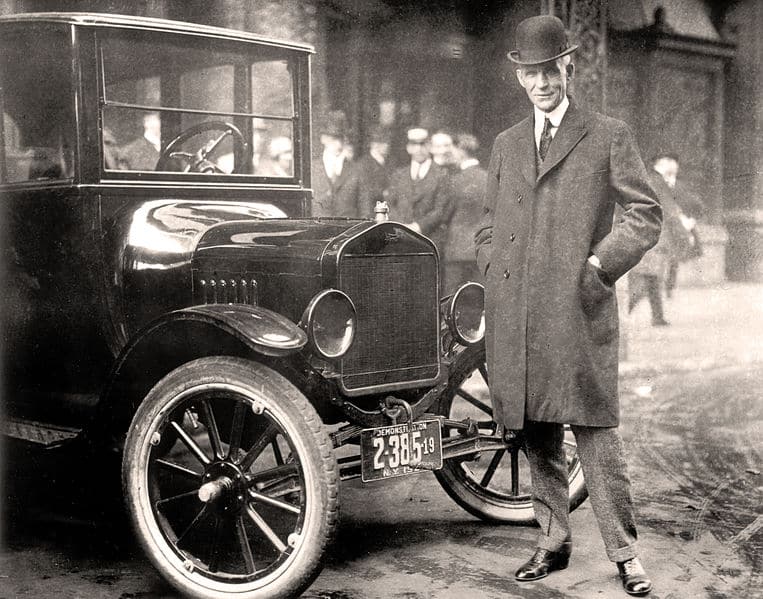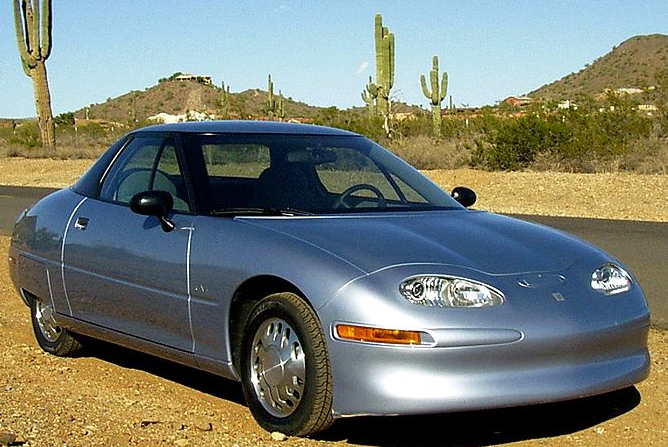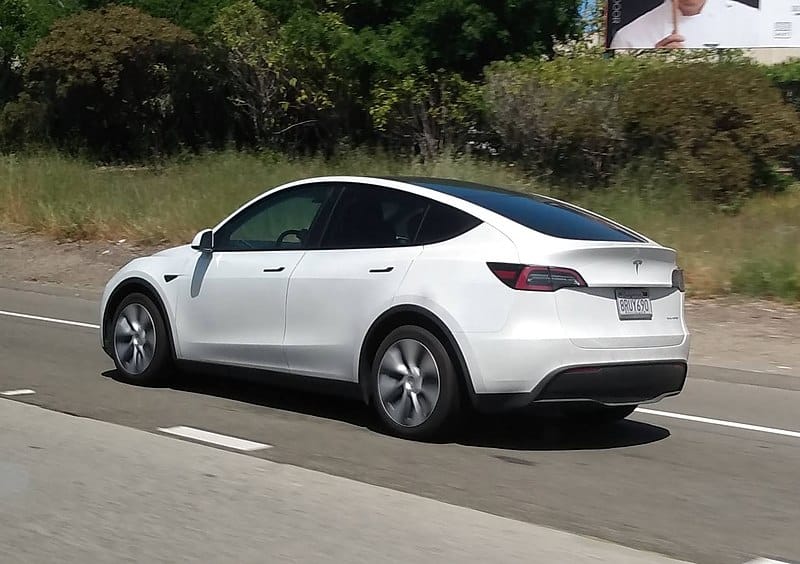Will the Electric Car Be Killed Again?
Many people don’t know that the electric vehicle (EV) revolution was killed twice. First, in the 1900s in America, there was a time when EVs outnumbered internal combustion engine (ICE) vehicles and were thought to become the dominant form of transportation. They were quiet, and because gas vehicles didn’t have the catalytic converters and other smog-reducing devices they do today, gas cars emitted a tremendous amount of noxious fumes, harmful to both drivers and members of the community. This pollution made the news frequently at the time.
Ford’s inexpensive Model T was less than half the price of the typical EV because of Ford’s innovative mass production technique, which was copied by many industries during the Industrial Revolution. Therefore, the Model T killed the EV revolution in the 1900s. One wonders what Ford’s founder, Henry Ford, would think of Ford’s current EV strategy.

Who Killed the Electric Car?
The second time the EV revolution was killed was in the 1990s. “Who Killed the Electric Car?” is the title of director Chris Paine’s 2006 documentary about the EV revolution in the 1990s, focused primarily on GM’s ill-fated, first mass-produced EV, the EV1. The film was a large part of the inspiration for the creation of EVinfo.net in January 2022.

Examining the evolution of the electric car, the film “Who Killed the Electric Car?” highlights the EV’s tumultuous journey through history, underscoring the pivotal moment when the community’s enthusiasm for electric vehicles was met with the pioneering creation of the doomed General Motors EV1, featuring a lead acid battery with a range of 60 miles. The California Air Resources Board (CARB) passed its zero-emissions vehicle (ZEV) mandate in 1990. This mandate required the seven major automobile suppliers in the United States to offer electric vehicles to drivers in order to continue sales of their gasoline-powered vehicles in California.
Following the influential CARB mandate, major automakers were propelled into the electric car fray, resulting in the production of nearly 5,000 electric vehicles. However, the documentary also casts a critical eye on the subsequent and controversial decision to recall and dismantle these vehicles, examining the intricate web of air quality issues, geopolitical oil industry dynamics, and the overarching challenges posed by global warming—all of which continue to be hotly debated themes today, in our collective journey towards adopting 100% sustainable transportation options.
The film poignantly details the controversial reversal of the California Air Resources Board’s mandate, a shift influenced by a combination of a variety of formidable forces. After facing considerable legal pressure from automobile manufacturers, ongoing lobbying from the oil industry, the hyped promise of future hydrogen vehicles, and policy changes under the George W. Bush administration, the mandate’s objectives were significantly undermined. Throughout the documentary, General Motors’ actions are laid bare as they sought to prove a lack of consumer interest in the EV1. Despite concerted efforts by consumers to keep the electric dream alive—including offering a collective $1.9 million to purchase the last 78 EV1 cars in Burbank, CA—the company proceeded to reclaim and crush nearly all the EV1s. Only a few electric relics were spared, disabled, and handed over to museums and academic institutions for posterity.
The emotional struggle reaches a peak as the film depicts the intense protests led by passionate activists and celebrities like Alexandra Paul and Colette Divine, whose fervent attempts to halt the transportation of the remaining EV1s to their demise would ultimately lead to their arrest, underscoring the high stakes and deep emotions surrounding the fight for electric cars.

The documentary further delves into the resilience of electric car enthusiasts, who faced an uphill battle against the auto industry’s strategic maneuvers. These individuals, many of whom had embraced the environmental and economic potential of electric vehicles, organized protests and campaigns to rescue the remaining cars. However, their efforts would prove futile against the giant corporations equipped with monumental resources and influence. In a particularly poignant scene, the film leads us to the Petersen Automotive Museum in Los Angeles, where deactivated EV1 car #99 sits silently.
Chelsea Sexton, a former EV sales representative, is invited to revisit the last vestige of what once was a beacon of progress. Her emotional connection to the car underscores the crushing blow dealt to the electric vehicle’s early supporters. The film doesn’t stop at the past, though; it casts a critical eye on the purported future of environmentally friendly vehicles. It debates the practicability and environmental impact of hydrogen fuel cell cars, which were being touted as the next big thing, while simultaneously shining a hopeful light on the promise of plug-in hybrids.
Notably, it highlights the emergence of new players in the EV arena, such as Tesla Motors, which released the Tesla Roadster two years after the film in 2008, signaling that the electric dream might be down but not out. Sexton and others in the movement to save the EV1 went on to form the EV adoption nonprofit Plug in America.
In an effort to provide a comprehensive view of the electric vehicle’s rise and fall, the documentary features candid interviews with several celebrities who were early adopters of the EV1, including Ed Begley Jr., Mel Gibson, Tom Hanks, Peter Horton, and Alexandra Paul. Their enthusiasm and personal testimonials provide a human face to the technology, reflecting the potential electric cars have for transforming the auto industry into a more sustainable enterprise.
Alongside the celebrity narratives, the film brings depth and diversity through insights from a selection of public figures and experts. The likes of Jim Boyd, S. David Freeman, and Frank Gaffney contribute to the discourse on the technology’s regulatory challenges and opportunities. Alan C. Lloyd, as Chairman of the California Air Resources Board, offers perspective on legislative battles, while figures like Alan Lowenthal, Edward H. Murphy of the American Petroleum Institute, consumer advocate Ralph Nader, and former Director of Central Intelligence James Woolsey address the broader implications ranging from environmental policy to national security.
These interviews, combined with compelling news footage encompassing the development, launch, and marketing of electric vehicles, construct a rich mosaic of narratives that paint a detailed picture of a critical moment in automotive history.
The documentary further enriches its narrative by including the perspectives of the very individuals who crafted and engineered the technologies that would come to define the modern electric vehicle.
Key players in the evolution of EVs, such as Wally Rippel, Chelsea Sexton, Alec Brooks, Alan Cocconi, and Paul MacCready, share their first-hand experiences and technical know-how, providing an insider’s view of the innovation and challenges within the field. Moreover, individuals like Stan and Iris M. Ovshinsky, who contributed significantly to battery technology, and Joseph J. Romm, an authoritative voice on climate and energy policies, deliver crucial insights on the broader implications of electric vehicle technology. Romm, in particular, offers a critical analysis, suggesting that initiatives like the government’s “hydrogen car initiative” were missteps, effectively sidelining more immediate solutions like electric and hybrid vehicles that promised to mitigate greenhouse gas emissions and bolster national energy security.
Providing balance to the narrative are voices from within the auto industry, including GM’s Dave Barthmuss, Ford’s John Wallace, and Toyota’s Bill Reinert, who provide the perspective of legacy automakers and often opposition to the electrification movement, underscoring the complexity and multi-faceted nature of the societal shift towards electric mobility.
Chris Paine’s Who Killed the Electric Car? is a discerning exploration of the electric vehicle’s rocky journey, steered onto the screen with both finesse and pointed inquiry. Jessie Deeter’s production prowess brings to life the nuances of this complex tale, while the executive production team — Tavin Marin Titus, Richard D. Titus of Plinyminor, alongside Dean Devlin, Kearie Peak, Mark Roskin, and Rachel Olshan of Electric Entertainment — lend their substantial expertise and passion for storytelling to amplify the documentary’s impact. Together, they weave a cinematic experience that not only delves into the technological feats and failures of EVs but also evokes critical thinking about our societal commitment to sustainable transportation.
The documentary’s resonance with contemporary issues of environmental responsibility and energy independence captivated audiences and critics across the globe, leading to its feature at various prestigious film festivals. Who Killed the Electric Car? graced the screens of the Sundance, San Francisco, Tribeca, Los Angeles, Berlin, Deauville, and Wild and Scenic Environmental film festivals, garnering widespread acclaim. Its theatrical release in June 2006 provided a worldwide platform, not only appealing to enthusiasts and advocates within the green movement but also sparking broader public dialogue on the future of transportation and the urgent need for sustainable practices.
Killing the Electric Car in 2024
Many of the same forces that killed the electric car in the 1990s are still trying to kill EVs today. Misinformation abounds on social media and news articles.
Oil giants such as BP and Shell are investing heavily in EV charging, seeing the writing on the wall. Other oil companies playing the “wait and see” game before investing in EV charging shouldn’t continue to do so much longer unless they risk severely diminishing future profits.
The 2024 United States presidential, and House and Senate elections, scheduled for Tuesday, November 5, 2024, will be very important to the future of the EV revolution in America and around the globe.
Members of both parties have supported EV technology and growth. For example, building on the assets that make the automotive industry successful, Georgia is rapidly developing as the capital of EV manufacturing for the nation. Republican Governor Brian P. Kemp has stood behind this effort and helped bring tremendous economic growth to Georgia. This is made possible by significant federal funding supported mostly by Democrats.
The Democratic party has been leading the growth of the EV industry through billions in federal funding. Most notably, the $5 billion National Electric Vehicle Infrastructure (NEVI) Formula Program is part of the $1.2 trillion Infrastructure Investment and Jobs Act (IIJA) signed into law by Democratic President Biden in November 2021.
Now is the Time to Support EVs
The future of the EV revolution is not set. Where it goes from here is up to you. If you want it to succeed, back political candidates that support it. Educate yourself on EVs. If you’re unable to buy or lease at the moment, choose an EV if you are renting a car. Talk to your friends and neighbors who have adopted EVs; they can provide valuable insight. Barriers to adoption, such as EV charging problems and others, are being addressed. New EV prices are coming down. Used EVs are available in greater numbers and at lower prices than ever before. Buyers may qualify for a point-of-sale federal tax credit of up to $7,500 if they purchase a new, qualified plug-in hybrid electric vehicle (PHEV) or battery electric vehicle (BEV). If a buyer purchases a qualified used electric vehicle from a licensed dealer for $25,000 or less, the buyer may claim 30% of the sale price up to a maximum credit of $4,000. There’s never been a better time to drive electric.
The EV Revolution Keeps Growing

News reports about cutbacks in EV plans from Honda, Ford, GM, and others have given the impression that the EV revolution is dying. This gives encouragement to EV critics, but this is not true. Other companies, such as Hyundai, are going all-in on electric. Some companies have reported losses, but others are succeeding, creating a net gain.
The Tesla Model Y was the bestselling car in the world in 2023, selling 1.23 million units, surpassing both the Toyota RAV and Corolla (2022’s winner). This was the first time an EV was the bestselling car in the world.
Companies don’t make huge profits overnight with new technology like electric vehicles. In January 2010, the Department of Energy issued a $465 million loan to Tesla Motors. Daimler bought into Tesla with a 10% share. These two things saved Tesla from bankruptcy, as it was bleeding cash profusely at the time. In 2011, Chris Paine documented this in an interview with Elon Musk in his follow-up film, “Revenge of the Electric Car.” Ford, GM, and others cutting back on EVs need to realize that profitability from EVs may take some time, but investing now makes sense. Tesla’s monumental success, in a short 21 years should stand as an example of how to succeed at selling EVs.

Electric Vehicle Marketing Consultant, Writer and Editor. Publisher EVinfo.net.
Portfolio: BillPierce.net
